Imagining a Plan to Power Up Houston’s Near Northside Community
Hines College architecture students win Energy Mentor award for innovative urban planning with usage of biofuel technologies
by Nicholas Nguyen • August 20, 2024
Over the summer, University of Houston Gerald D. Hines College of Architecture and Design students won the inaugural “Power the Community” International College Design Competition, earning a $7,000 prize for “Distinguished Design – Urban Planning.” Energy Mentors is a non-profit founded to provide students with mentorship in the energy industry. Hines College architecture students Yen Co, Yulisa Tran, Lucia Poggioli, Jailyn Benavides, Leslie Alamirra, and Lauren Smith formed Team Jelly Fish while enrolled in the QuadZero studio at the College.
Professor Bruce Race, who also serves as the College’s director for the Center for Sustainability and Resilience, and adjunct faculty member and UH alum Travis Mohle (B.Arch. ’17 and M.S. Arch. ’23) led the QuadZero studio. After learning how Energy Mentors and the QuadZero studio shared similar learning objectives, it became a spring studio requirement for students to package their final team project and submit it to the competition.
“The QuadZero Studio explores the convergence of renewable energy, transportation, and net-zero development,” Race explained. “Working with local community partners, students research and propose net-zero greenhouse gas emissions, energy, water, and waste strategies at a district scale. Their net-zero district becomes the context for their individual building designs.”
above: Team Jelly Fish working together in studio; the group posed with their instructor after a presentation (left to right: Travis Mohle, Yen Co, Yulisa Tran, Leslie Alamirra, Lucia Poggioli, Lauren Smith, and Jailyn Benavides).
In the studio, Team Jelly Fish developed concepts for a net-zero neighborhood fueled by emerging biofuel technology in Houston’s Near Northside Community. They began in two stages, first focusing on renewable energy, transportation, and net-zero practices on an urban scale. Then, they designed individual projects to further their energy narrative.
“Our research and site analysis provided valuable insights into the community’s needs, guiding our design process. It was essential for us to keep the focus on the intended beneficiaries as we explored sustainable and resilient strategies to promote growth opportunities within the neighborhood,” the group shared in a statement.
The masterplan focused on waste management, water conservation, reduction of greenhouse gas emissions, and energy efficiency. By focusing on these areas, the group hoped to propose ways for the community to be less reliant on the oil and gas industries in the area.
While creating opportunities for socio-economic growth, they also explored the potential for using algae biofuel as a key feature in their urban plan. During their research, they learned that one kilogram of algae can absorb nearly double its weight in CO2. This led to the creation of zones utilizing algae bioreactors while collecting wastewater and stormwater, as well as an attempt to address flooding in the neighborhood.
All of this also went hand in hand with their studio's objectives. Race added, “They estimated a net zero energy outcome from algae bio-fuel production for green hydrogen, rooftop solar, and energy waste. Their proposal also managed water harvesting for algae production and domestic water to achieve net zero water and waste targets.”
Team Jelly Fish also considered social issues in their master plan, aiming to make the district walkable while enhancing public transportation to facilitate job access while reducing emissions. They prioritized creating opportunities for education and extracurricular activities for the youth and established daycare centers, making the neighborhood more family-friendly.
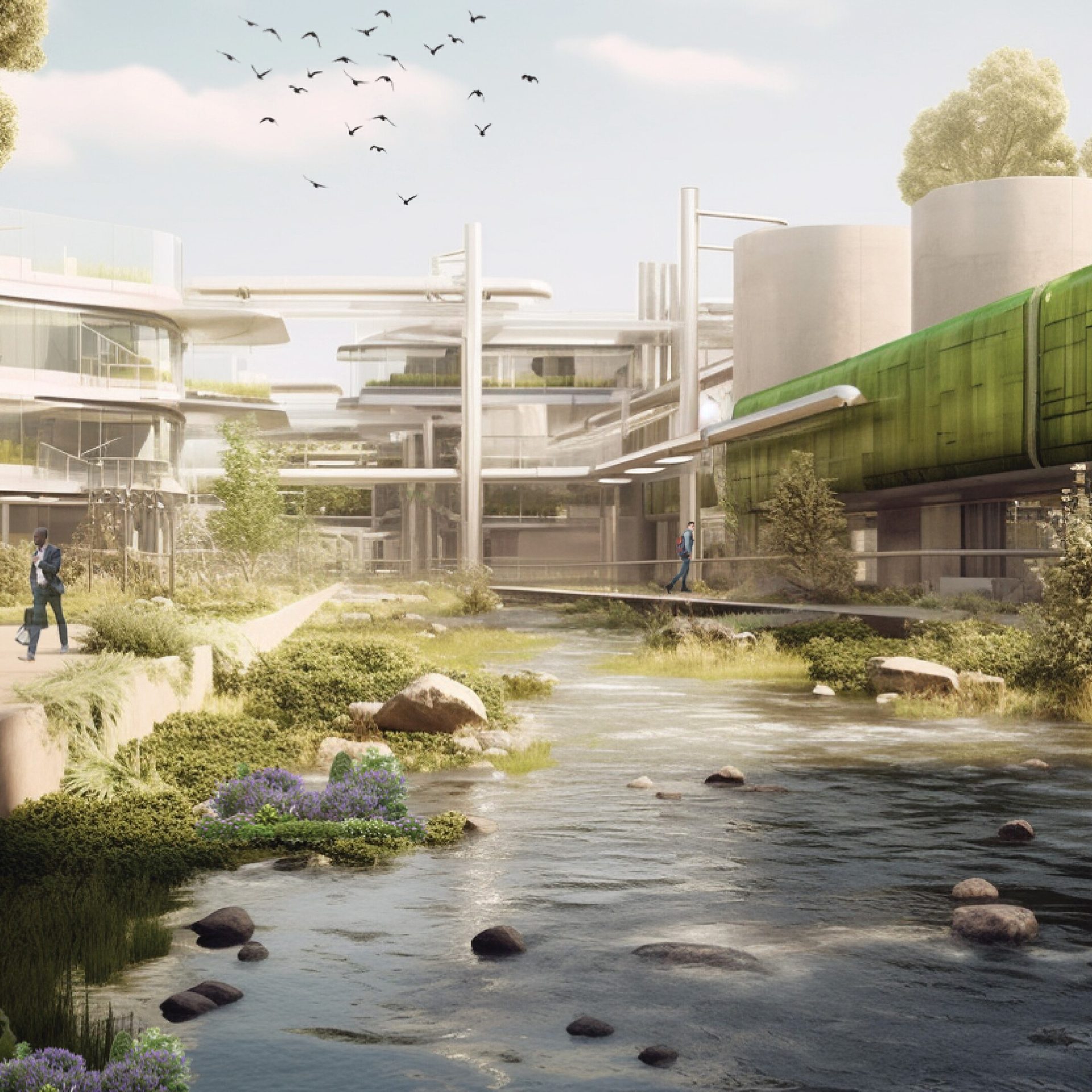

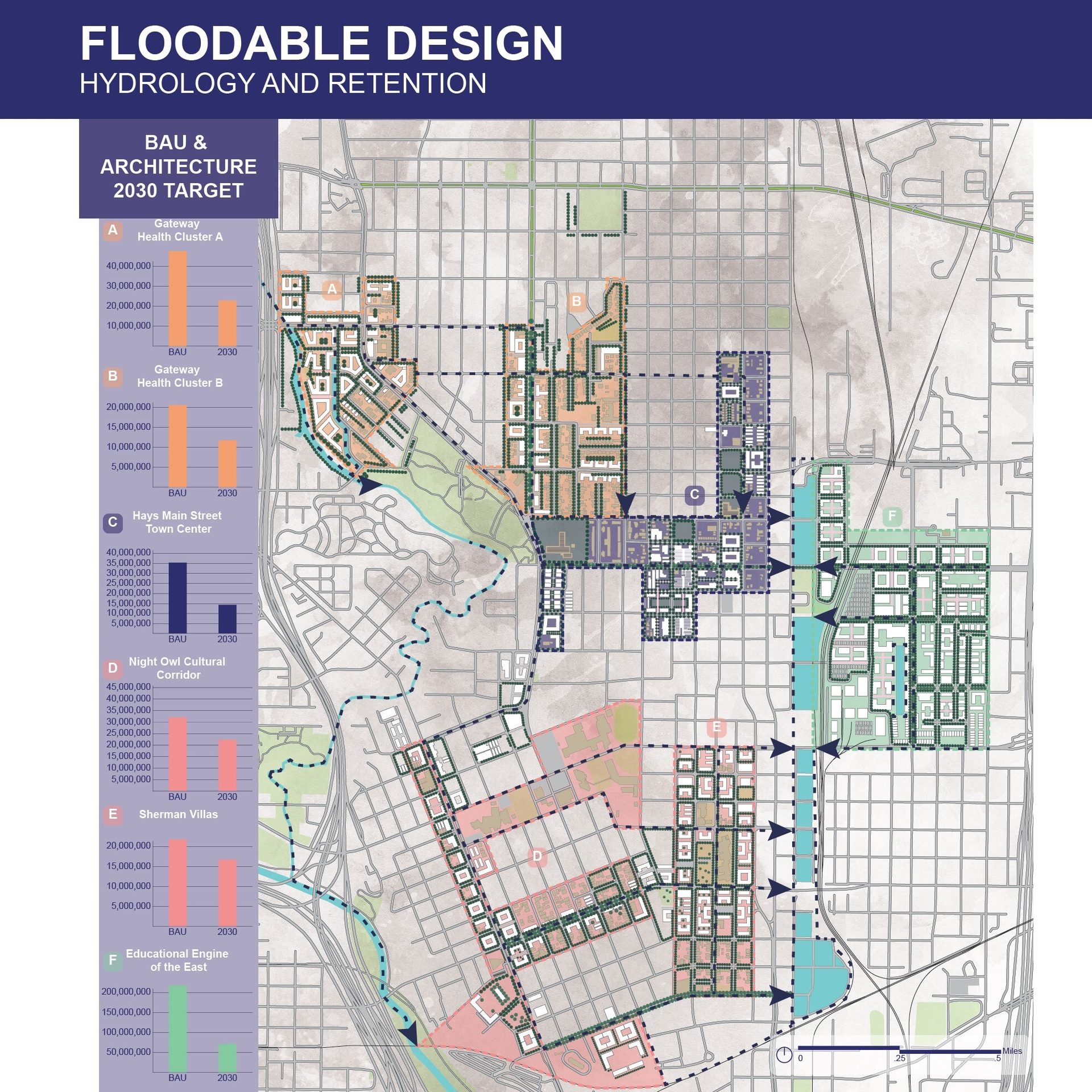

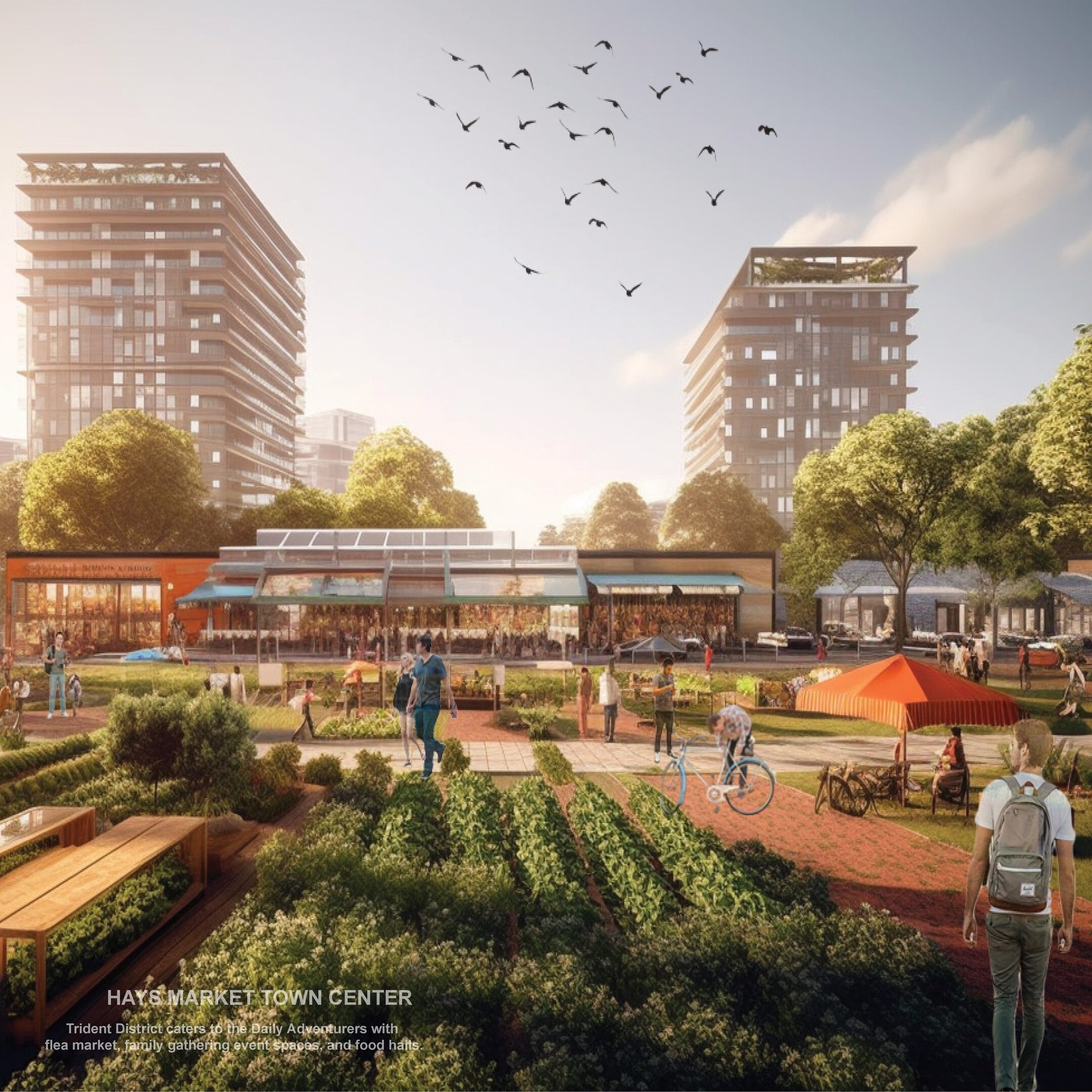
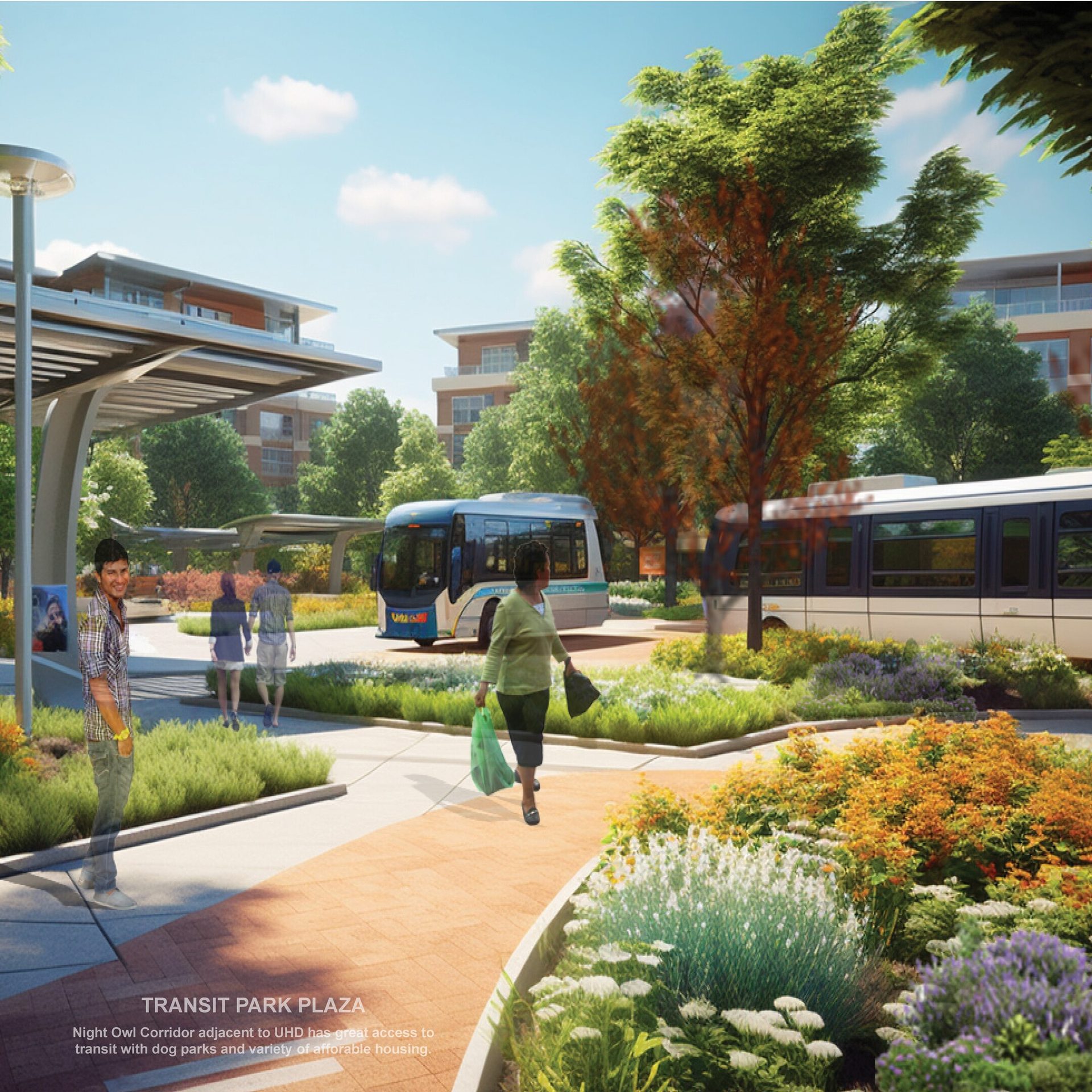
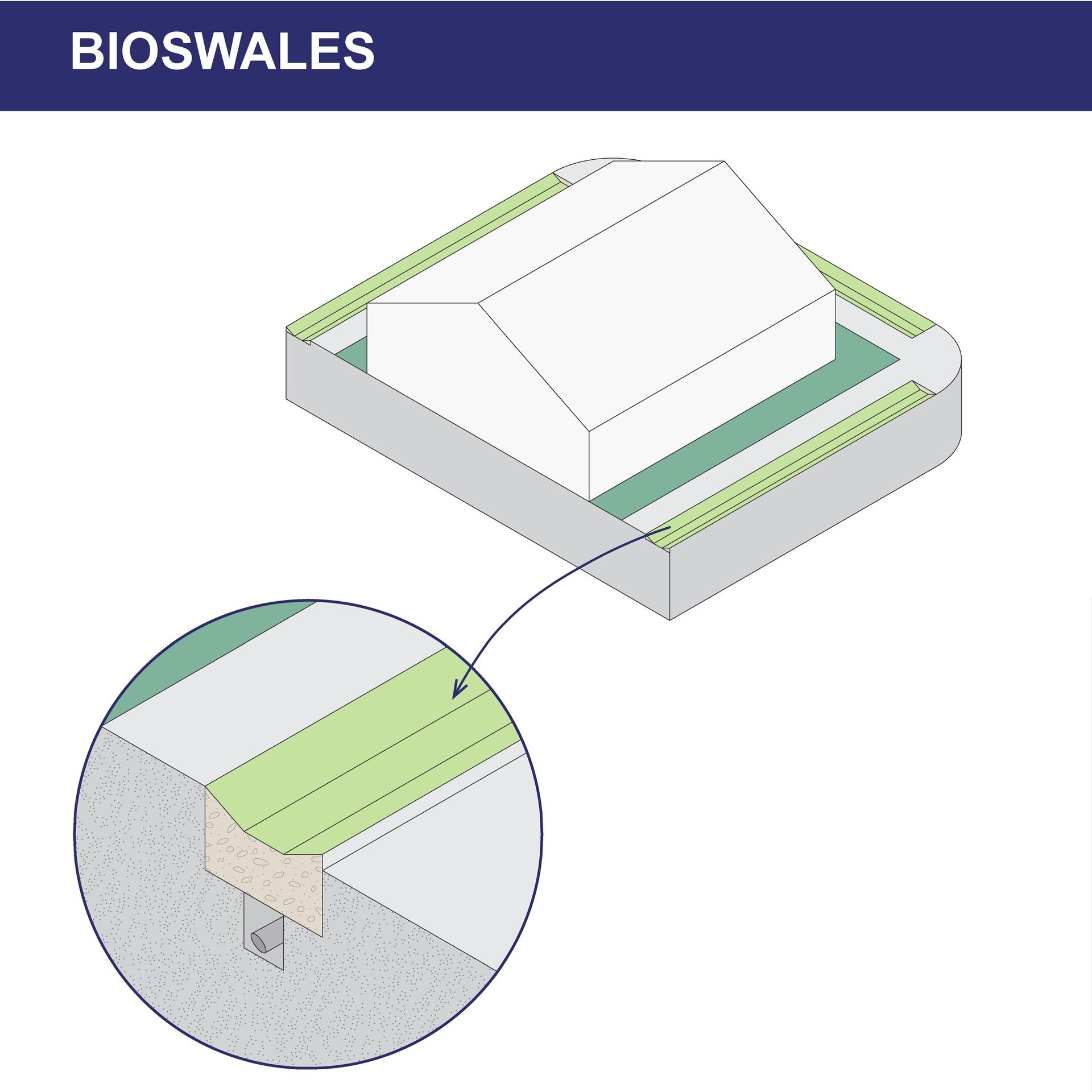


above: The team's project images and proposal
“By determining that our goal was to revitalize the community, considerations were made to stabilize the current population and lay a foundation for future generations,” they said, making equity a key factor in their decision-making.
Not only did they gain invaluable knowledge on sustainability and resilience applied to urban planning, but the group also developed strong collaborative skills to prepare them for the profession. They learned the value of making quick decisions and the importance of trying new things, making mistakes, and then learning from the experience. As they worked with each other, they also benefited from a multi-layered studio mentorship experience. The group of fourth-years also included a fifth-year member, Yen Co. Along with receiving insights from other fifth-year students, Team Jelly Fish acknowledges the help they received through technical pointers from Race and how to shape a narrative from Mohle.
Ultimately, participating in Energy Mentors and winning an award has inspired the designers to explore opportunities in the design world.
“The competition taught us that anything is possible and that everything starts with an idea that is modified along the way to result in the desired outcome,” they said. “One shouldn’t limit their scope and should explore revolutionary ideas yet to be seen as they can potentially be researched and adapted into the future. We are the front line of innovators for our generation to come.”
More College of Architecture and Design Stories

The Leadership Council recently welcomed several new members with extensive experience supporting the Council’s current goals to strengthen industry connections with students and complete fundraising for the Construction Robotics and Fabrication Technology (C.R.A.F.T.) Lab.

The Hines College welcomes two new faculty members and elevates three members to new positions this year. All five members bring decades of architecture and design experience in professional and academic fields.

Alumni Spotlight: Tarek Moubayed (M.Arch. '23)
Recent graduate Tarek Moubayed (M.Arch. '23) now works as an architect at AECOM. He said he pursued his studies at the Hines College because: "Design, in and of itself, is a process of bringing people together to solve problems... This is the kind of environment I felt I was exposed to at the College, and it is one I am grateful for."





